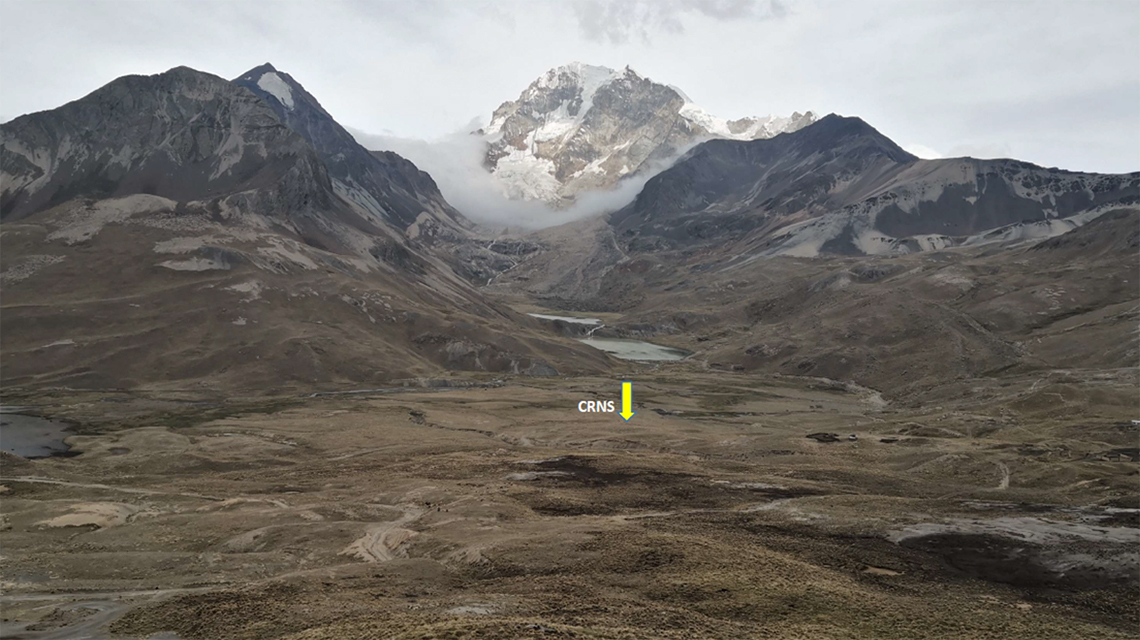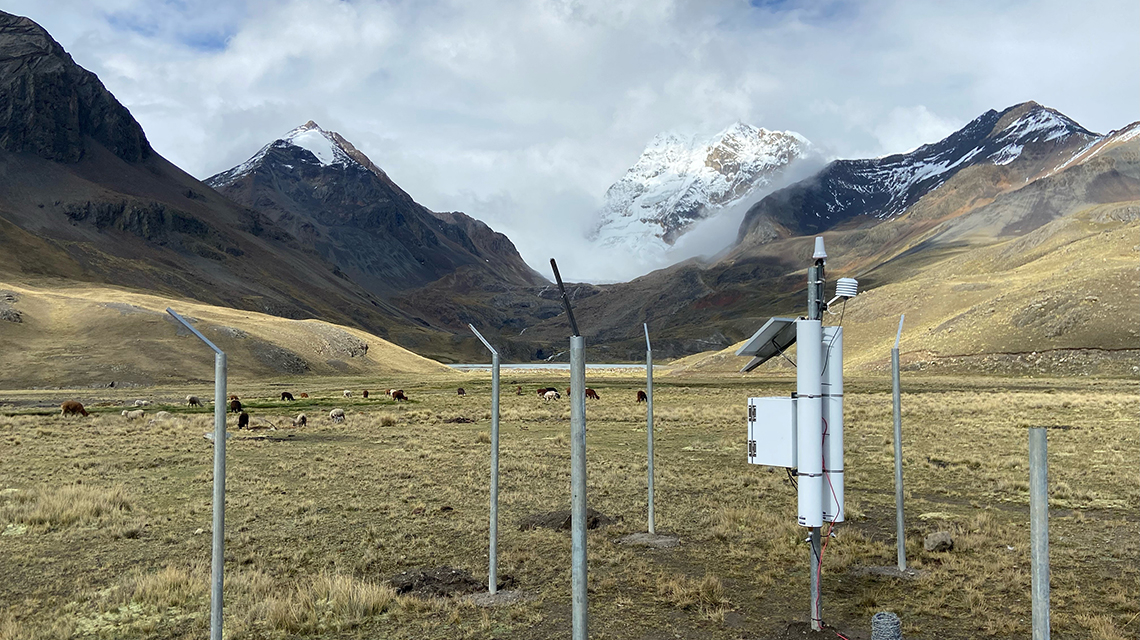This week, the IAEA, in cooperation with the Food and Agriculture Organization of the United Nations (FAO), delivered equipment to Bolivia to help local scientists study how high-altitude wetlands can buffer water as glaciers disappear. The Cosmic Ray Neutron Sensor (CRNS), which measures area-wide soil moisture, was installed at around 4,500 meters altitude, close to the eternal snow of the 6,088 meters high Huayna Potosi mountain in the Cordillera Real. The device will help scientists, who were trained on its use, to predict the extent and likelihood of droughts, and in turn support decision makers to develop climate-change adaptation strategies for mountain ecosystems.
Since 1980, the Cordillera Real has lost more than a third of its ice surface due to climate change, impacting water supply for millions of Bolivians, sometimes severely. Indeed, without glaciers, reservoirs at the bottom of mountains do not get replenished regularly. The Huayna Potosi’s glacier loses two metres in thickness and retreats by 20 metres annually, and is predicted to disappear in 60 years. The glacier feeds the Tuni reservoir, which supplies water to El Alto, a city of 1 million. To mitigate and adapt to frequent severe droughts, early warning systems are needed. This is where nuclear techniques will help.
“The wetlands can buffer the dwindling water supply resulting from shrinking glaciers, but their role under a changing climate remains unclear,” said Edson Ramirez, a glaciologist at the San Andrés University in Bolivia and the coordinator of the FAO/IAEA’s studies in the Andes. “The Cosmic Ray Neutron Sensor can help determine the amount of moisture, i.e. whether water in wetlands is shrinking, which can affect its availability for the users lower down the mountain.”








